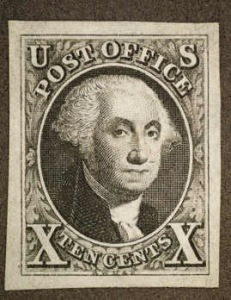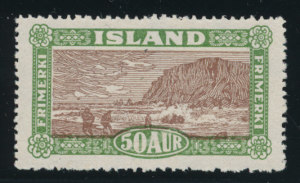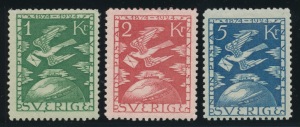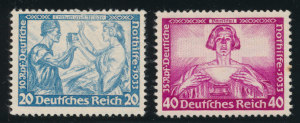Until about 1930, stamp designs were very conventional. Playing off a stamp’s role as a form of money, the first designs were largely coin type centers framed in a vignette. The pictures in the centers were largely people of some importance (either real or mythical) to the country [examples are in figures 1 and 2]. The 1930’s brought a change to this. Probably a result of the vast changes in the art world, which was going through numerous trends that separated art from the merely representational, stamp design in the 1930s began a sort of mythicalism that used the stamps to tell a story on both conscious and unconscious levels. The Soviet stamp designers in this period were the most forward [figure 3], exaggerating their motifs to accentuate the benefits of communism (happy workers) and the corroding effects of capitalism (war, disease, famine). Iceland, Sweden, and Mexico idealized their semi-mythical prehistory [figures 4, 5, and 6].







